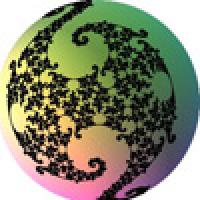
Plus Advent Calendar Door #19: Fun with fractals
Oh, those beautiful snowflakes! They've put us in the mood for fractals, so let's celebrate some favourite shapes:
Pandora's 3D box
An amateur fractal programmer has discovered a new 3D version of the Mandelbrot set. The new creation is based on similar mathematics as the original 2D Mandelbrot set, but its infinite intricacy extends into all three dimensions, revealing fractal worlds of amazing complexity and beauty at every level of magnification.
Unveiling the Mandelbrot set
And if you're wondering what the Mandelbrot set is to start with, here's an introduction from one of the world's experts.
Modelling nature with fractals
Computer games and cinema special effects owe much of their realism to the study of fractals. This article takes you on a journey from the motion of a microscopic particle to the creation of imaginary moonscapes.
How big is the milky way?
A question which has been vexing astronomers for a long time is whether the forces of attraction between stars and galaxies will eventually result in the universe collapsing back into a single point, or whether it will expand forever with the distances between stars and galaxies growing ever larger. Learn how fractal dimension gives us a way of
approaching the question.
Extracting beauty from chaos
Images based on Lyapunov Exponent fractals are very striking. Find out what Lyapunov Exponents are, what the much misunderstood phenomenon of chaos really is, and how you can iterate functions to produce marvellous images of chaos from simple mathematics.
Non-Euclidean geometry and Indra's pearls
If you've ever redecorated a bathroom, you'll know that there are only so many ways in which you can tile a flat plane. But once you move into the curved world of hyperbolic geometry, possibilities become endless and the most amazing fractal structures ensue.